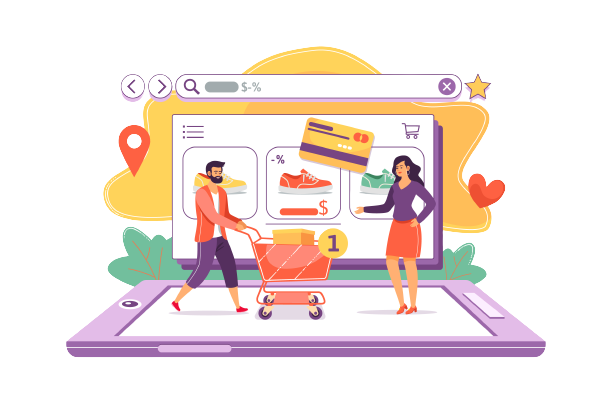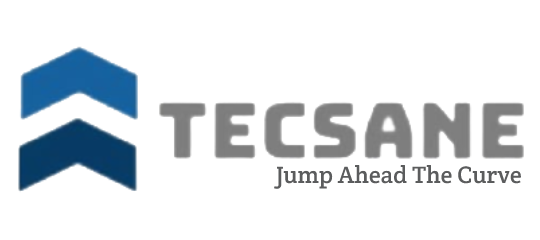With increasing internet penetration, there are a lot of online stores coming up every day. Shopify is one of the favorite e-commerce platforms these days. As certified Shopify partners, we come across a major query from our clients: “How they can get an edge over other websites?” we’ll explore effective ways to enhance your Shopify store’s online presence, connect with potential customers, and create a seamless shopping experience.
By integrating various powerful techniques, you can increase traffic and attract new customers. Let’s dive into these strategies:
- SEO Optimized Blogs
Enhancing your blog posts with strategic optimization techniques can significantly improve your visibility in search results. Here’s how:
Targeted Keywords: Include carefully selected keywords that align with your potential customers’ search queries. This strategic approach helps search engines recognize the relevance of your content, pushing it higher in search rankings.
Optimized Structure: Craft blog posts with enticing headings, subheadings, and visually appealing elements. This structure captivates search engine crawlers and improves your search result ranking.
Valuable Content: Deliver informative and captivating content that addresses your target audience’s needs. By offering solutions to their pain points, you establish yourself as a trusted resource and drive traffic to your Shopify store.
Internal & External Links: Strategically place internal links to relevant pages within your Shopify store and external links to authoritative sources to enhance your blog’s credibility.
Social Sharing: Encourage readers to share your blog posts on their favorite platforms, extending your reach and attracting new visitors.
By incorporating SEO into your blog content creation, you can unlock a surge of traffic and elevate your Shopify store’s visibility.
- Social Media Marketing
Utilize the power of social media marketing, including both organic and paid promotions, to drive and acquire traffic for your Shopify store. Here’s how:
Organic Social Media Marketing: Create engaging content, actively interact with users, and use relevant hashtags to spark engagement, loyalty, and organic traffic.
Paid Social Media Promotions: Design targeted ad campaigns on platforms like Facebook and Instagram to reach potential customers based on demographics, interests, and behaviors.
Leveraging Reddit: Engage in relevant communities, share insights, and host AMA sessions to drive traffic and discover new customers for your Shopify store.
Mastering social media marketing can provide a steady stream of traffic and drive acquisition for your Shopify store.
- Pinterest’s Shoppable Pins
Leverage Pinterest’s shoppable pins to seamlessly integrate product information and purchasing options within your pins. Here’s how:
Captivating Visual Discovery: Showcase your products in stunning visual displays, enticing Pinterest users to explore and make purchases directly from your Shopify store.
Seamless Shopping Experience: Shoppable pins allow users to explore product details, pricing, and availability without leaving Pinterest, increasing the likelihood of conversions.
Amplify Reach and Engagement: Users can save and share shoppable pins, expanding your brand’s organic reach and attracting more traffic to your Shopify store.
Targeted Advertising Brilliance: Utilize Pinterest’s targeted advertising options to reach users actively seeking product recommendations.
Unleashing Pinterest’s Visual Search: Optimize your shoppable pins with relevant keywords and captivating visuals to increase the chances of discovery by users actively searching for products similar to yours.
By embracing shoppable pins on Pinterest, you can ignite traffic and propel your Shopify store to new heights.
- Google Shopping Ads
Harness the power of Google Shopping ads to increase traffic to your Shopify store:
Expanded Visibility: Display product images, prices, and store information directly in search results to capture the attention of potential customers.
Targeted Reach: Google Shopping ads target users based on their search queries and intent, ensuring your ads are shown to interested and relevant audiences.
Streamlined Shopping Experience: Users can view and compare products within the ad, minimizing friction and encouraging them to click through to your Shopify store.
Mobile Optimization: The ads are optimized for mobile devices, maximizing your visibility to on-the-go shoppers.
Conversion Tracking and Optimization: Use Google’s tools to measure the effectiveness of your Shopping ads and refine your campaigns for higher conversions.
By leveraging Google Shopping ads, you can turbocharge your Shopify store’s traffic and attract high-intent customers ready to purchase.
- Email Newsletter
Create irresistible newsletters to captivate your audience and drive traffic to your Shopify store:
Compelling Engagement: Craft newsletters with informative content, personalized recommendations, and exclusive incentives to engage your subscribers and spark their curiosity.
Persuasive Call-to-Action: Include clear and enticing calls-to-action (CTAs) that direct readers to specific landing pages or product sections on your Shopify store.
Exclusive Incentives: Reward your subscribers with exclusive promotions and early access to new products, creating a sense of exclusivity.
Personalized Experience: Segment your email list and deliver personalized content based on subscriber preferences, demographics, or purchase history.
Consistency and Timing: Maintain a consistent newsletter schedule to keep your audience engaged and encourage them to revisit your Shopify store.
With effective newsletter strategies, you can captivate loyal customers for your Shopify store.
- Customer Loyalty Programs
Implement a well-designed loyalty program to incentivize repeat purchases and attract new customers:
Rewarding Repeat Purchases: Offer exclusive perks, discounts, or points for customers who make repeat purchases.
Referral Incentives: Encourage existing customers to refer friends and family by offering rewards or discounts for successful referrals.
Exclusive Benefits for Members: Create a sense of exclusivity by offering special benefits to loyalty program members.
Personalized Rewards: Tailor rewards based on customers’ preferences and purchase history.
Gamification Elements: Add gamification elements to make the loyalty program engaging and fun.
A customer loyalty program can foster repeat visits, attract new customers, and help your Shopify store flourish.
- Influencer Marketing
Collaborate with influential individuals to harness their impact and attract targeted traffic to your Shopify store:
Identify the Right Influencers: Find influencers whose audience aligns with your target market and whose content resonates with your brand.
Engage in Authentic Partnerships: Collaborate with influencers to create engaging and authentic content that showcases your products.
Amplify Reach and Credibility: Leverage influencers’ trust and credibility to increase your brand’s visibility and attract targeted traffic.
Track and Measure Results: Use tracking tools and unique promo codes to monitor the success of influencer campaigns.
Nurture Long-term Relationships: Cultivate ongoing partnerships with influencers to ensure a continuous flow of targeted traffic.
Embracing influencer marketing can unlock a world of traffic and customer acquisition opportunities for your Shopify store.
- Compelling Content
Create valuable and captivating content to establish your brand as a trusted authority and drive organic traffic:
Insightful Blog Posts: Craft informative articles that address your audience’s pain points and showcase your expertise.
Social Content Strategy: Create engaging content tailored to each social media platform to spark conversations, increase brand visibility, and drive traffic.
Website Content Strategy: Develop optimized product descriptions, engaging blog posts, and captivating landing pages to enhance your website’s search engine visibility.
Content Distribution: Maximize the reach of your content by leveraging various distribution channels.
By harnessing content marketing, you can magnetize customers, increase brand awareness, and drive targeted traffic to your Shopify store.
- Referral Rewards
Encourage existing customers to refer friends and family and expand your customer base:
Irresistible Incentives: Offer compelling rewards or discounts for customer referrals.
Amplify Word-of-Mouth: Leverage word-of-mouth marketing as satisfied customers advocate for your brand.
Personalized Referral Links: Provide customers with unique referral links for tracking and recognition.
Social Sharing Options: Make it easy for customers to share their referral links across social media platforms.
Engage and Reward: Acknowledge and reward customers who successfully refer others to your store.
Empower your existing customers to become brand ambassadors and expand your customer base through their enthusiastic referrals.
Conclusion
Boosting traffic for your Shopify store requires a multifaceted approach that combines various powerful techniques. These strategies can optimize your online presence, connect with potential customers, and create a seamless shopping experience, ultimately leading to increased traffic and customer acquisition. Incorporate these techniques into your marketing efforts to watch your Shopify store thrive with amplified traffic and growth.
If you’re ready to take your Shopify store to new heights, consider partnering with WebSpero Solutions, a leading Shopify SEO agency specializing in driving traffic and boosting conversions.




